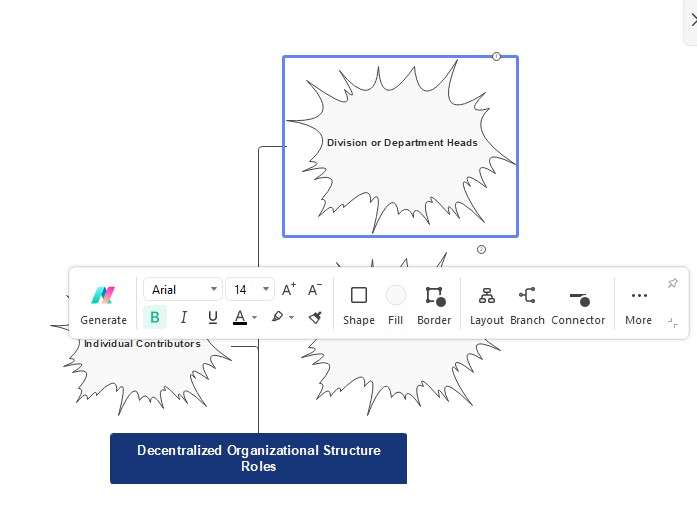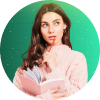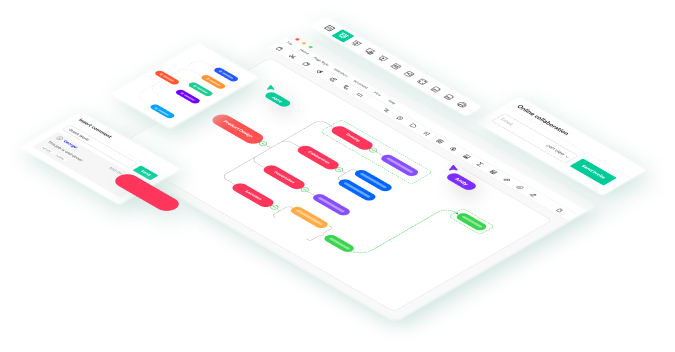A decentralized organization distributes decision-making authority across various levels or units rather than concentrating it at the top. This structure empowers employees and teams to make independent decisions, fostering agility and innovation. In today's dynamic business landscape, decentralization is increasingly valued for its ability to adapt quickly to changes, promote flexibility, and enhance responsiveness to customer needs.
This article will explore the fundamental principles underlying decentralized organizational structures, exploring how they differ from traditional centralized models. It will highlight the significance of decentralized structures in promoting employee empowerment, fostering creativity, and facilitating rapid adaptation to market dynamics.
In this article
Characteristics and Advantages of Decentralized Organizations
In today's rapidly evolving business landscape, decentralized organizations offer a paradigm shift in organizational dynamics. Here, we delve into the core attributes and benefits that define and distinguish these structures, outlining their pivotal role in driving innovation, enhancing employee engagement, and fostering competitive advantage.
1. Distribution of Decision-Making Authority
In decentralized organizations, decision-making authority is not centralized at the top but is distributed across various levels. This means that individuals throughout the organization, from frontline employees to middle managers, have the power to make decisions within their area of expertise or responsibility. Decentralization allows for quicker decision-making, as those closest to the situation can assess information and act promptly without waiting for approval from higher-ups.
By distributing decision-making authority, decentralized organizations empower employees and teams to take ownership of their work. This improves efficiency and fosters a sense of responsibility and accountability among staff. Additionally, decentralization promotes innovation by encouraging diverse perspectives and ideas in decision-making processes.
2. Autonomy and Empowerment
Decentralized organizations emphasize granting autonomy to lower-level employees and teams. This means that individuals are free to make decisions within the scope of their roles without constant supervision or micromanagement. Autonomy allows employees to take ownership of their work, increasing job satisfaction and motivation.
Empowering employees with autonomy enhances their sense of responsibility and commitment to the organization. It fosters a culture of trust and collaboration, as employees feel valued and respected for their contributions. Moreover, autonomy encourages creativity and innovation, as employees are more willing to take risks and explore new ideas without fear of retribution.
3. Fluid Communication Channels
Open communication channels are vital in decentralized organizations to ensure that information flows freely across different departments and levels. This includes regular meetings, transparent reporting structures, and accessible communication tools. Fluid communication promotes collaboration, enables quick decision-making, and ensures everyone is aligned with organizational goals.
Effective communication fosters a culture of transparency and trust within the organization. It encourages open dialogue, constructive feedback, and the sharing of ideas, which are essential for problem-solving and innovation. Additionally, fluid communication channels help prevent silos and promote cross-functional collaboration, leading to better outcomes for the organization as a whole.
4. Improved Responsiveness
Decentralized structures enable organizations to respond quickly to market changes and customer needs. With decision-making authority distributed across various levels, teams can adapt and pivot more swiftly to emerging trends or unexpected challenges. This agility allows decentralized organizations to stay ahead of the competition and maintain relevance in a rapidly evolving business landscape.
Improved responsiveness is a competitive advantage for decentralized organizations, enabling them to capitalize on opportunities and mitigate risks more effectively. By empowering employees to make timely decisions, these organizations can deliver better customer experiences and drive innovation in their products or services.
5. Enhanced Employee Engagement
Empowerment and autonomy in decentralized organizations lead to higher levels of employee engagement and motivation. Employees who feel trusted and valued are more likely to be committed to their work and invested in the organization's success. This results in higher productivity, lower turnover rates, and a more positive work culture.
Enhanced employee engagement is critical for organizational success, directly impacting performance and morale. By prioritizing employee empowerment, decentralized organizations can attract and retain top talent, foster creativity and innovation, and achieve their strategic objectives more effectively.
6. Increased Innovation and Creativity
Decentralization fosters a culture of innovation and creativity by encouraging diverse perspectives and ideas. Lower-level employees and teams are empowered to experiment, take risks, and explore new approaches to problem-solving. This culture of innovation drives continuous improvement and helps organizations stay ahead of the curve in an increasingly competitive market.
Increased innovation and creativity are key drivers of long-term success for decentralized organizations. By embracing new ideas and challenging the status quo, these organizations can adapt to changing market dynamics, anticipate customer needs, and develop innovative solutions that set them apart. This culture of innovation not only fuels growth but also ensures the organization's sustainability in the long run.
Decentralized Organizational Structures with EdrawMind
EdrawMind is a versatile and intuitive tool for visualizing complex organizational structures.
With its user-friendly interface and rich features, EdrawMind enables users to create visually appealing diagrams, charts, and mind maps that effectively communicate ideas and concepts. As organizations increasingly adopt decentralized structures to promote agility and innovation, EdrawMind becomes an invaluable resource for illustrating these dynamic frameworks.
Below, we explore how EdrawMind can be harnessed step-by-step to create comprehensive visualizations of decentralized organizational structures.
Step 1: Selecting a Template

Begin by launching EdrawMind and selecting a template suitable for depicting organizational structures. EdrawMind offers templates tailored for various business contexts, including decentralized organizational structures.
Step 2: Adding Shapes and Nodes

Once you've chosen a template, start by adding shapes and nodes to represent different levels, departments, and decision-making nodes within the organization. EdrawMind provides a comprehensive library of shapes and symbols that can be easily customized to suit your specific requirements.
Step 3: Defining Hierarchical Relationships

Use connectors and lines to define hierarchical relationships between different organizational elements. This step helps visualize the decentralized structure's flow of authority and autonomy.
Step 4: Customizing Styles and Formatting

EdrawMind allows for extensive customization of styles and formatting options, including colors, fonts, and line styles. Tailor the appearance of your diagram to enhance clarity and visual appeal.
Step 5: Adding Annotations and Descriptions

Add annotations, descriptions, and hyperlinks to your diagram to provide context and clarity. These elements help viewers understand the rationale behind the organizational structure and the roles of different entities within it.
Step 6: Collaborating and Sharing

EdrawMind supports collaboration features, enabling multiple users to simultaneously work on the same diagram. Take advantage of these features to gather feedback, refine the structure, and ensure team alignment. Once finalized, easily share the diagram with stakeholders by exporting it in formats like PDF, PNG, or Microsoft Office files.
By following the step-by-step guide outlined above, users can leverage EdrawMind's intuitive interface and rich features to create clear, concise, and visually compelling diagrams that effectively communicate the intricacies of decentralized frameworks.
Conclusion
Decentralized organizational structures, characterized by distributed decision-making and autonomy, offer numerous advantages, including agility, innovation, and heightened employee engagement. EdrawMind is an indispensable tool for effectively visualizing these structures, providing a user-friendly interface and comprehensive features.
With EdrawMind, users can seamlessly communicate complex concepts, promote clarity, and foster collaboration in navigating the intricacies of decentralized frameworks. By choosing EdrawMind, organizations can harness the power of visualization to drive success in an ever-evolving and decentralized business landscape.





 below.
below.  below.
below. 